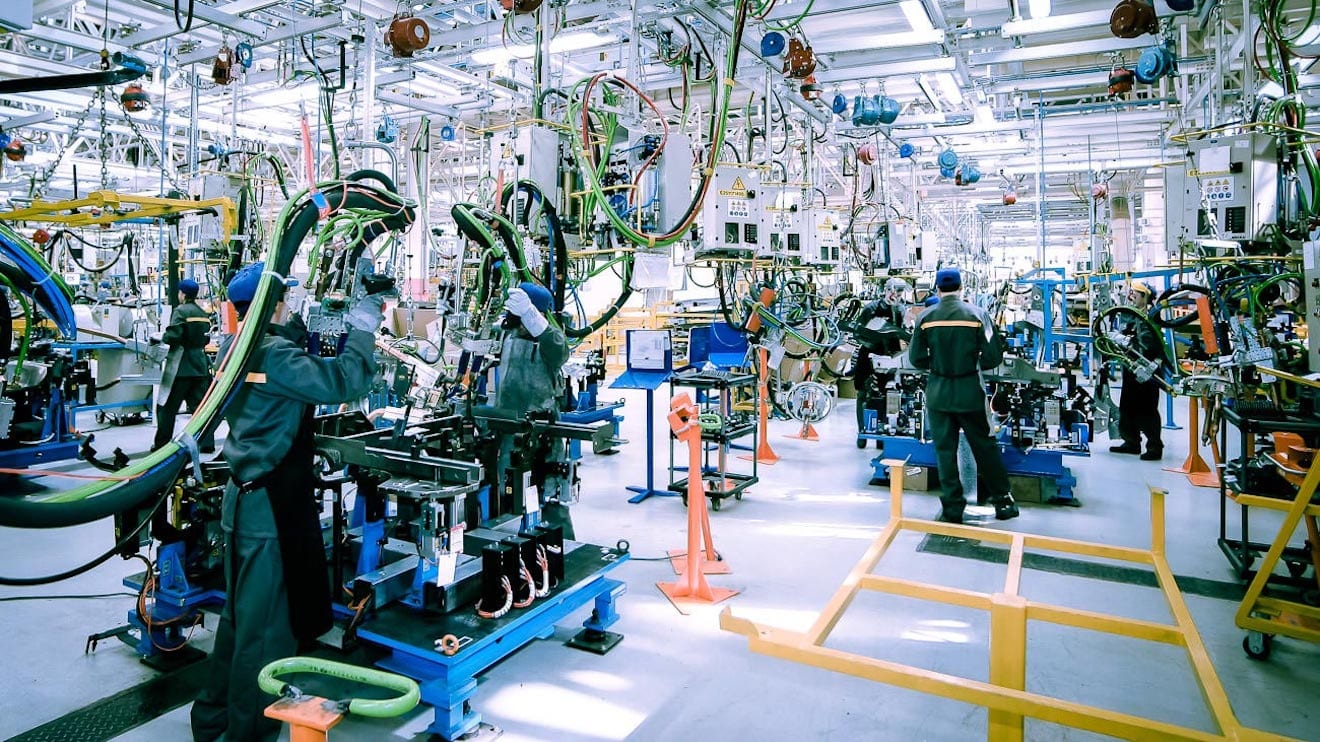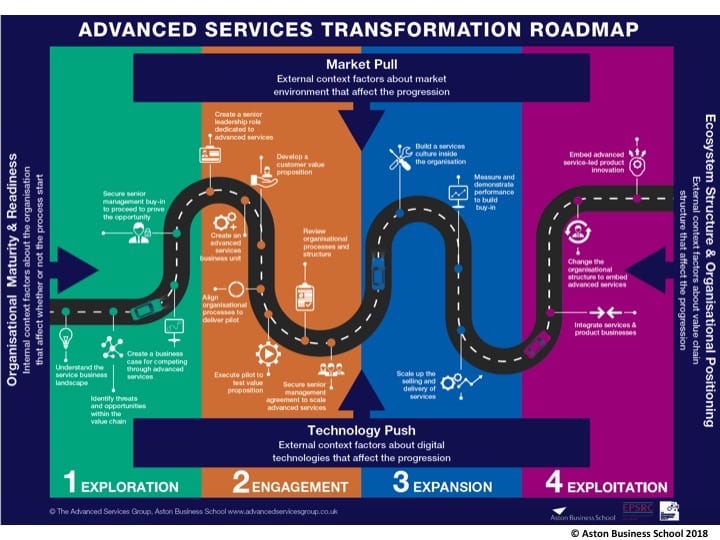The question on manufacturers’ lips is no longer “What is servitization?”
“These days, the question is ‘How do we do it?,'” says Ali Bigdeli, associate professor of industrial service innovation at the Advanced Services Group (ASG), Aston Business School’s servitization center of excellence at Aston University in Birmingham, UK.
The concept of servitization — namely, that manufacturers should transform their business models from simply selling products to selling the outcomes delivered by a combination of products and services — has taken root among a raft of major companies, including Rolls Royce, Xerox and Toyota.
To help manufacturers navigate through the “how” of servitization, ASG suggests a four-stage roadmap to the journey: exploration, engagement, expansion and exploitation.
The Road to Business Transformation
The journey to servitization begins with preparation, according to Bigdeli. During the exploration phase, companies must dig deep and decide if servitization is the right move for them — and if now is the right time to make that shift.
Once a company decides to move forward, the engagement stage is all about bringing people on board. This can be a major undertaking, particularly in sectors such as sales, where staff must switch from selling a product to something more intangible.
“You need to get momentum and coalition not only internally from the stakeholders involved — sales, marketing, and senior leadership — but also get some coalition outside the organization,” says Bigdeli. “You need to see if there’s any appetite from the customer.”
Customers must be seen as collaborators, not just as consumers. “The whole idea of servitization is about getting closer to the customer and sharing profit and loss with them,” Bigdeli says.
The expansion stage of the roadmap is all about launching your new services business, including working out your company’s charging structure.
SEE ALSO: Packaging Firm Nicklin Goes Big on Tech-Enabled Services
Finally, the exploitation stage is where these services become part of the DNA of your organization’s business model. As yet, acknowledges Bigdeli, the companies that have reached this stage — such as Rolls Royce and MAN Truck — are a rare breed.
Roadblocks on the Path to Business Transformation
While the four stages to servitization may sound simple, Bigdeli warns that many forces can derail the transformation along the way.

Ali Bigdeli
“It’s a massive undertaking, especially in the manufacturing context,” he explains. “Companies may have been in manufacturing for a hundred years or more, so it’s a mindset shift for the whole organization to switch to services. That’s why there may be so much resistance.”
One potential stumbling block is the maturity of the product itself. While the organization may see the benefits of servitization, the product itself also needs to be reliable and mature. If the provider is not sure about the reliability of the product, it will be too risky to offer uptime and take all the responsibilities such as repairs, maintenance and overhaul.
But potentially the biggest barrier is failing to understand customers.
“Many companies go with their own perception of customers’ needs,” says Bigdeli,” rather than understanding those needs through in-depth engagements with customers.”
Another key factor in a company’s successful transition to a servitization model is understanding what Bigdeli calls its “value eco-system,” which includes suppliers and technology providers. Organizations need to evaluate who they must deal with, whether they understand the benefits of servitization, and if they are happy to collaborate under the new model.
“These factors influence the pace of an organization’s move,” says Bigdeli. “It’s not just affecting one stage, but the whole pace of the transformation.”
“Many companies go with their own perception of customers needs, rather than understanding those needs through in-depth engagements with customers.” — Ali Bigdeli, Advanced Services Group
Technology is not usually a major challenge in adopting a servitization model, according to Bigdeli. In fact, sensors and IoT may enable servitization, but companies must be able to pick out the relevant data from the larger silos of data they generate.
“Companies may have the technology in place and know how to collect data, but then all the problems arise,” he notes. “What do they do with all that data from machines?”
In the end, Bigdeli says that the data must serve one purpose — benefiting customers by helping the company provide better service to them.
It’s a powerful reminder that, when adapting to a servitization business model, companies must do more than simply weigh the potential upside for their own bottom line. They must carefully consider the other, the equally important bottom line at stake: How will servitization create value for their customers?



Share this: